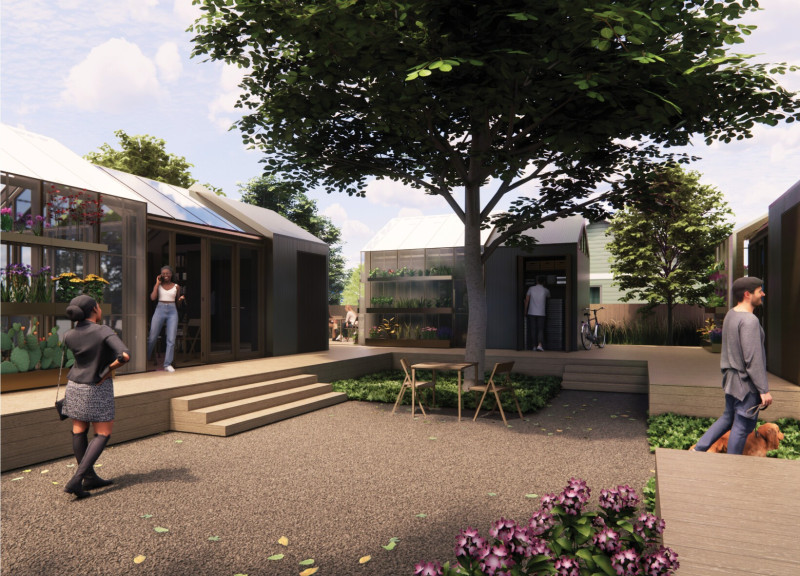5 key facts about this project
The project is designed with a clear function in mind, serving as a multi-purpose facility intended to accommodate various activities that strengthen social connectivity. The thoughtful layout features both public and private areas, ensuring that different user groups can interact comfortably while having the option to retreat into more intimate spaces. This careful spatial organization not only enhances the user experience but also encourages a sense of belonging among its occupants.
At the heart of the design is a commitment to sustainability, with the architects employing environmentally friendly materials that have minimal impact on the surrounding environment. This materiality is not merely functional; it invokes a sense of place, referencing local traditions while showcasing modern building techniques. Elements such as timber cladding, natural stone finishes, and energy-efficient glass contribute to the overall aesthetic, giving the structure a warm and inviting presence that harmonizes with the local landscape.
A prominent feature of the project is its facade, which engages in a dialogue with both the natural environment and the urban fabric. The architects have skillfully manipulated light and shadow through the use of varied textures and materials, creating a dynamic interplay that changes throughout the day. The facade is not just a barrier; it serves as a canvas that reflects the surrounding landscape, inviting passersby to engage with the building while creating an appealing perspective for those inside.
Interior spaces are designed with the same level of consideration, focusing on user comfort and functionality. The strategic use of open floor plans encourages fluid movement between spaces, fostering interaction among users. Thoughtfully placed windows and skylights allow natural light to permeate interior spaces, enhancing the atmosphere while reducing reliance on artificial lighting. This careful consideration of natural elements exemplifies the project's commitment to creating an inviting, well-lit environment.
Unique design approaches also emerge in the project's approach to community involvement. The architects have engaged with local stakeholders throughout the design process, ensuring that the building meets the needs and aspirations of its future users. This participatory approach not only enriches the design but also reinforces the project's role as a community-centric space, where architecture serves as a bridge between the built environment and the people it serves.
The structure itself is designed to be adaptable, allowing various functionalities to coalesce within its walls. This flexibility is essential for accommodating changing community needs over time. The architects envision future growth and innovation, fostering an environment where ideas can flourish in a supportive, well-designed setting. The result is a space that not only serves immediate needs but is also prepared to evolve with its community.
Through its innovative design, attention to materiality, and community-focused approach, this architectural project stands as a testament to contemporary practices that prioritize user experience and environmental sustainability. For those seeking a comprehensive understanding of the project, including architectural plans, sections, and design details, it is encouraged to explore the presentation further, uncovering the nuanced architectural ideas that shape this remarkable endeavor. By engaging with the project’s presentation, readers can appreciate the multifaceted layers of thought that inform each aspect of this architectural design.


























